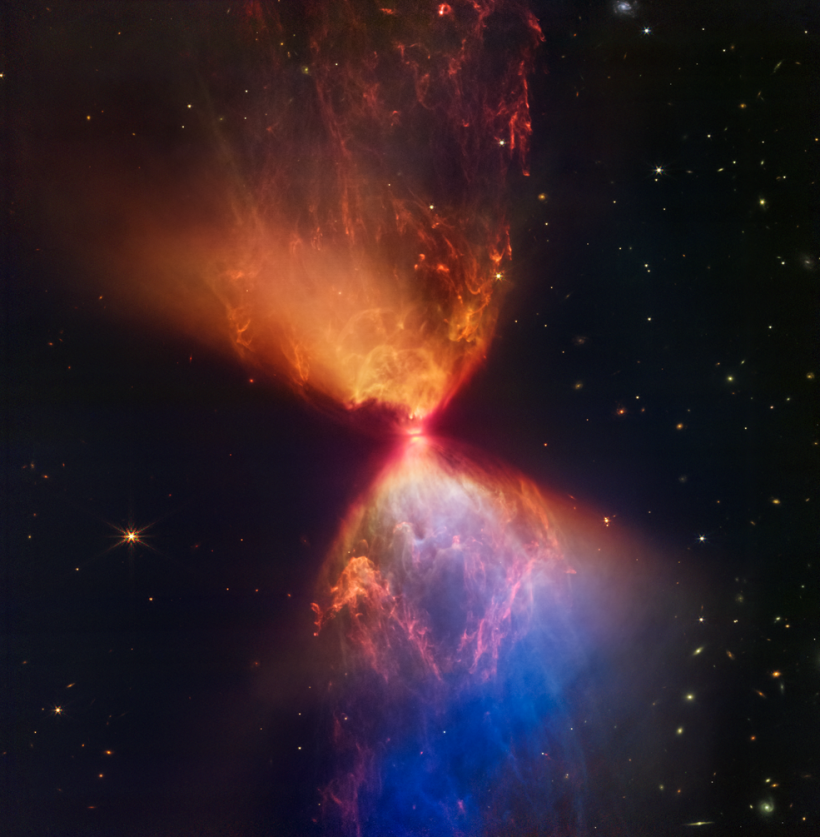A star is born in fiery fashion and Webb bears witness to such a wondrous event.
The protostar within the shadowy cloud L1527 has had previously unseen features exposed by NASA's James Webb Space Telescope, offering fresh information about the birth of a star.
The Taurus star-forming region is a prime target for Webb's Near-Infrared Camera since these blazing clouds are only discernible in infrared light (NIRCam), according to NASA.

(Photo : NASA, ESA, CSA, and STScI. Image processing: J. DePasquale, A. Pagan, and A. Koekemoer (STScI))
Hourglass Hides a Protostar
The "neck" of this hourglass-shaped object conceals the protostar itself. The center of the neck is darkened by an edge-on protoplanetary disc. Cavities within the surrounding gas and dust are illuminated by light from the protostar that seeps above and below this disc.
The blue and orange clouds that are the region's most noticeable features in this infrared image outline the cavities created when material bursts away from the protostar and comes into contact with surrounding matter.
The colors are a result of layers of the dust separating Webb and the clouds. The blue areas in the photo contain the least amount of dust. According to NASA, too much dust blocks the escape of blue light, producing pockets of orange.
Molecular hydrogen filaments that have been shocked by the protostar's material ejections are also seen by Webb. New stars can't form in the cloud because of shocks and turbulence; otherwise, they would. As a result, the protostar rules the area and hoards most of the resources for itself.
Read Also: NASA's James Webb Space Telescope Reveals Never-Before-Seen Details of the Early Universe
Youthful, Catastrophic Body
L1527 is a relatively youthful body, being only about 100,000 years old despite the havoc it produces. L1527 is regarded as a class 0 protostar, the earliest stage of star formation, according to its age and its brightness in far-infrared radiation as seen by missions like the Infrared Astronomical Satellite.
These protostars still reside in a dense cloud of gas and dust, and they still have a long way to go before they can be considered stars in their own right, according to NASA.
L1527 does not yet produce its energy through hydrogen nuclear fusion, a vital component of stars.
Although mainly spherical, its shape is unstable and takes the form of a tiny, puffy clump of gas that has a mass between 20 and 40% that of our Sun.
The protostar's core gradually contracts and approaches stable nuclear fusion as it continues to take in mass. This image's scene demonstrates L1527 accomplishing just that.
NASA said that the disc is roughly the size of our solar system and can be seen in the photograph as a dark band in front of the dazzling core. Hence, this image of L1527 offers a window into the early evolution of our Sun and solar system.
Related Article: NASA's James Webb Space Telescope Finds Odd Molecules in Supermassive Black Holes
This article is owned by Tech Times
Written by Jace Dela Cruz








